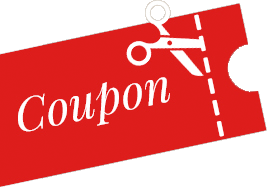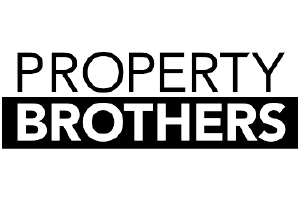
From excess chips and salsa at your favorite Mexican restaurant to indulging in one too many desserts at a birthday, we all have that moment where we’ve gone a little overboard. Plus, things like stress, emotions or lack of sleep can lead to overeating. The trouble is those "extras" add up quickly and can get in the way of our health goals.
According to a Cornell Study, the average person makes over 200 food-related decisions a day. We’re often on "mindless autopilot" when it comes to food and drink decisions, blissfully unaware and distracted when grabbing for that bag of chips.
While indulging every once in a while is fine, balance and moderation are key to a healthy, happy lifestyle. Understanding the what, why and when in your eating habits is crucial to kicking those unhealthy habits. To start fresh, a food journal is an effective tool to be more accountable and mindful of your food choices.
How to Keep a Food Journal
A food journal is a detailed log of the food or drinks you consume in a day, a helpful tool to track calorie consumption or eating patterns. It helps increase your awareness of what and how much you’re eating, but can also benefit other health goals like weight loss. Kaiser Permanente conducted a study of 1,700 people and found that those who kept a consistent daily food journal lost twice as much weight over six months, compared to those who didn’t.

Recording what and when you eat in a journal or diary helps bring awareness to your eating habits, so you’re able to evaluate your hunger, fullness or mood after you eat. It can be a helpful tool for weight loss, recognizing eating habits or patterns, and becoming a more mindful eater. Read through the steps below to start your journey to food journaling.

1. What to Include in a Food Journal
A daily food journal should tell you the truth about your habits, even if it’s ugly. The key is to be accurate and consistent. All you need is a pen, food log and a little time and commitment.
Jotting down extra details or notes will help provide more insight when you look back later for patterns or trends. If you’re just getting started and unsure of what to record, start with the basics:
- The food or drink
- The amount
- The time
- The location or environment: Was it on-the-go while driving, in a restaurant or at your desk?
- Your feelings: Do you feel happy, stressed, bored or tired?
- The scenario: Were you crunching numbers at work, on the way to a morning workout or relaxing on the couch?

2. Write Down What You Eat Right Away
Don’t wait until the end of the day to record what you ate –– chances are you’ll miss a meal or snack. If you’re trying to manage your portion, include the exact serving size in weight or volume.
You can write it in measurements like ounces, cups or tablespoons. If you’re away from home or eating out, it’s okay to estimate or check the label and nutrition facts. Calories and fat are helpful stats to record when it comes to nutrition.

3. Be Specific & Consistent
For an accurate depiction of your eating habits, record daily for at least two weeks. The more detailed your entries, the better. After all, just "a sandwich" is very different from a "whole wheat turkey sandwich with lettuce and tomato." The goal of food journaling is to record everything so that you have a truthful log to evaluate later. Some questions to consider:
- How was your food prepared? Was it baked, boiled, fried or steamed?
- Did it come with sauces, dressings or toppings?
Not only can you record your calories, but it can be an eye-opener for checking how much sugar, fat or salt you consume. Too much sodium or sugar and too little fiber, vitamins and minerals will affect your health too.

4. Track Your Eating Trends
After completing a week’s worth of food journaling, step back and look at what you’ve recorded. Search for any trends, patterns or habits. For example, you might consider:
- Is my diet mostly low carb or high protein?
- Am I eating vegetables and fruit every day? If so, how many servings?
- Am I consuming added sugar? If so, how frequently?
- How often do I eat on the go?
- Do I use food as a reward or fix when I’ve had a bad day?
- Do I reach for unhealthy snacks when I’m stressed or tired?
After you get into the habit of making entries in your food journal, you'll start becoming more aware of what you're consuming. Most importantly, listen to your body and what works for you. If you notice how sluggish and tired you feel after eating white bread, for example, consider replacing it with a wholegrain or rye option. If you skip a primary meal like breakfast, it may be the reason you’re reaching for snacks throughout the day.
Make these decisions after you have a clear pattern established. Writing in a food journal can help you set nutrition goals and stick to them by being more conscious of what you eat and how much you eat.
Benefits of Food Journaling
Writing down what you eat daily is not only a tool for weight loss, but it can help you identify food allergies or sensitivities, inflammation triggers, emotional eating and so much more.
The simple act of writing things down helps you become more mindful of what you put in your body, which inevitably helps you identify patterns or gaps in your diet, encourage healthy modifications, and discourage unhealthy habits (like that afternoon cookie you think you "need").
It also allows you to make a connection between how stress, work or certain situations affect your food choices.
Printable Food Journal
The longer you keep a food journal and the more detailed it is, the more you will be able to learn about the mind-body connection to your dietary habits. Armed with that information, you'll be able to develop a more successful plan for eating right.
While there are different methods to tracking your eating habits, PEW Research Center found there were benefits to "the 50% of trackers who record their notes in some organized way, such as on paper" compared to those who kept track in their heads or didn’t have a tracking method.
While food journaling is not a quick fix to weight loss or a better mood, it’s an effective method to becoming more mindful when you eat. If you prefer pen and paper to technology, download one of our themed printables below to get started.
A printable food journal is useful to anyone looking to find more balance and moderation. If you’re seeking a more mindful, healthy lifestyle, start by printing out these helpful charts and set yourself on track to put an end to the cravings. You can even hang them on your kitchen cabinets or refrigerator to quickly grab on your way out the door.
Sources: Cornell Chronicle 1, 2 | PEW Research Center | Science Daily


























